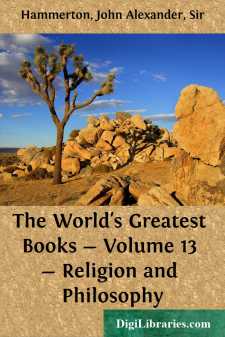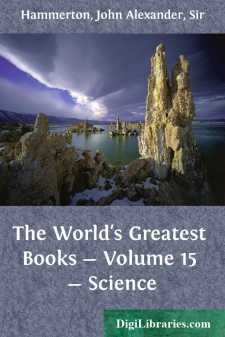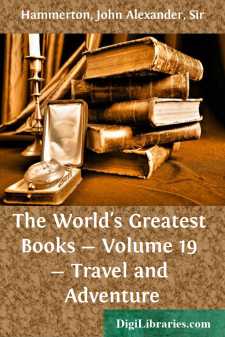Categories
- Antiques & Collectibles 13
- Architecture 36
- Art 48
- Bibles 22
- Biography & Autobiography 813
- Body, Mind & Spirit 142
- Business & Economics 28
- Children's Books 15
- Children's Fiction 12
- Computers 4
- Cooking 94
- Crafts & Hobbies 4
- Drama 346
- Education 46
- Family & Relationships 57
- Fiction 11828
- Games 19
- Gardening 17
- Health & Fitness 34
- History 1377
- House & Home 1
- Humor 147
- Juvenile Fiction 1873
- Juvenile Nonfiction 202
- Language Arts & Disciplines 88
- Law 16
- Literary Collections 686
- Literary Criticism 179
- Mathematics 13
- Medical 41
- Music 40
- Nature 179
- Non-Classifiable 1768
- Performing Arts 7
- Periodicals 1453
- Philosophy 64
- Photography 2
- Poetry 896
- Political Science 203
- Psychology 42
- Reference 154
- Religion 513
- Science 126
- Self-Help 84
- Social Science 81
- Sports & Recreation 34
- Study Aids 3
- Technology & Engineering 59
- Transportation 23
- Travel 463
- True Crime 29
The World's Greatest Books - Volume 12 - Modern History
Description:
Excerpt
SAMUEL ELIOT
History of the United States
Samuel Eliot, a historian and educator, was born in Boston in 1821, graduated at Harvard in 1839, was engaged in business for two years, and then travelled and studied abroad for four years more. On his return, he took up tutoring and gave gratuitous instruction to classes of young workingmen. He became professor of history and political science in Trinity College, Hartford, Conn., in 1856, and retained that chair until 1864. During the last four years of that time, he was president of the institution. From 1864 to 1874 he lectured on constitutional law and political science. He lectured at Harvard from 1870 to 1873. He was President of the Social Science Association when it organised the movement for Civil Service reform in 1869. His history of the United States appeared in 1856 under the title of "Manual of United States History between the Years 1792 and 1850." It was revised and brought down to date in 1873, under the title of "History of the United States." A third edition appeared in 1881. This work gained distinction as the first adequate textbook of United States history and still holds the place it deserves in popular favor. The epitome is supplemented by a chronicle compiled from several sources.
The first man to discover the shores of the United States, according to Icelandic records, was an Icelander, Leif Erickson, who sailed in the year 1000, and spent the winter somewhere on the New England coast. Christopher Columbus, a Genoese in the Spanish service, discovered San Salvador, one of the Bahama Islands, on October 12, 1492. He thought that he had found the western route to the Indies, and, therefore, called his discovery the West Indies. In 1507, the new continent received its name from that of Amerigo Vespucci, a Florentine who had crossed the ocean under the Spanish and Portuguese flags. The middle ages were Closing; the great nations of Europe were putting forth their energies, material and immaterial; and the discovery of America came just in season to help and be helped by the men of these stirring years.
Ponce de Leon, a companion of Columbus, was the first to reach the territory of the present United States. On Easter Sunday, 1512, he discovered the land to which he gave the name of Florida or Flower Land. Numberless discoverers succeeded him. De Soto led a great expedition northward and westward, in 1539-43, with no greater reward than the discovery of the Mississippi. Among the French explorers to claim Canada under the name of New France, were Verrazzano, 1524, and Cartier, 1534-42. Champlain began Quebec in 1608. The oldest town in the United States, St. Augustine, Florida, was founded September 8, 1565, by Menendez de Aviles, who brought a train of soldiers, priests and negro slaves. The second oldest town, Santa Fe, was founded by the Spaniards in 1581.
John Cabot, a Venetian residing in Bristol, was the first person sailing under the English flag, to come to these shores. He sailed in 1497, with his three sons, but no settlement was effected....












